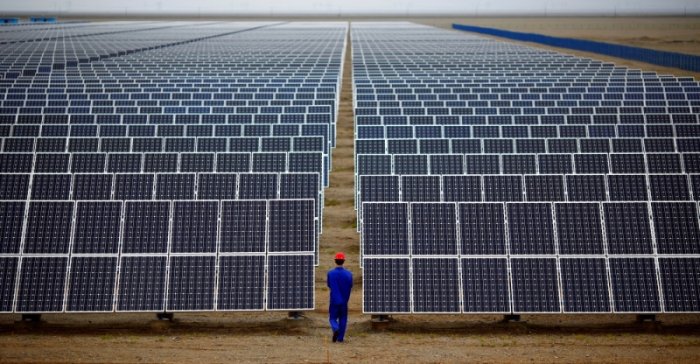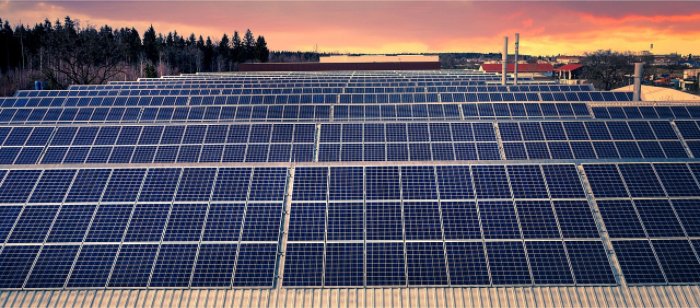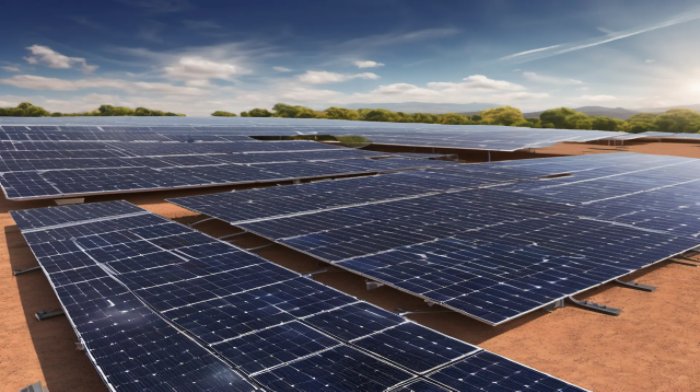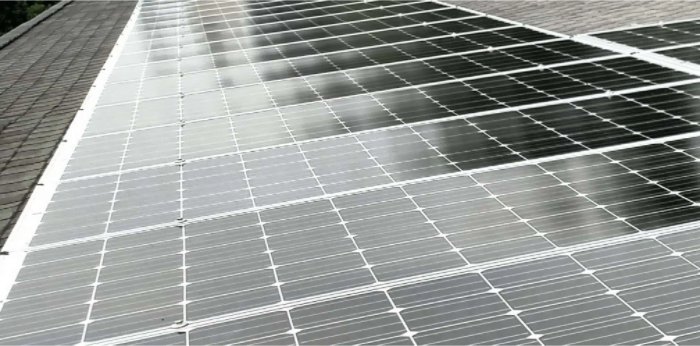Crystal Structure Comparison
Crystal structure comparison is important for understanding properties and behaviors of materials. It is often a comparison of polycrystalline and single-crystal components, with each type of material having distinctive atomic arrangements.
Comparative Analysis
Polycrystalline Components: Polycrystalline materials are composed of many crystalline grains, each with its unique orientation in regards to its atomic arrangement. This results in grain boundaries and therefore abrupt changes in atomic arrangements.
Single-Crystal Components: Single crystals are also unique materials, in that they possess one global atomic arrangement throughout the material, meaning there are no grain boundaries. This results in single crystals having unique mechanical, electrical and optical properties.
Mechanical Properties:
Polycrystalline Example: Consider a polycrystalline rod composed of metal. Since there exist grain boundaries in the material dislocations are easily transmitted from one grain to another, resulting in the material being more ductile. On the other hand, the metal rod’s tensile strength is lower than a single-crystal metal rod.
Single-Crystalline Example: Contrast this with a single-crystal metal rod, with a greater tensile strength, as it will have grain boundaries for dislocations, but will have a lower ductility of the material.
Electrical Conductivity:
Polycrystalline Example: Due to the presence of grain boundaries, electron transport is effected in polycrystalline silicon, used in the fabrication of solar cells, resulting in the lower electrical conductivity of the polycrystalline material than a single-crystal material.
Single-Crystalline Example: Therefore, single-crystal material, used in integrated circuits for example, has higher electrical conductivity because it does not possess grain boundaries to impede electron transport.
X-Ray Diffraction:
Polycrystalline Analysis: X-ray diffraction of a polycrystalline sample will produce a multitude of diffraction peaks associated with a specific range of crystallographic orientation.
Single-Crystal Analysis: In contrast, X-ray diffraction of a single crystal will show an intense and sharp diffraction line, associated with only one crystallographic orientation.
Microstructural Analysis:
Polycrystalline Examination: Viewing a microscope slide of a polycrystalline material will show grain boundaries and distinctive grains within the material.
Single-Crystal Examination: A microscope slide of a single crystal will show no grain boundaries, simply one material.
Conclusion
This paper discussed the differences between polycrystalline and single-crystalline components. This comparison provides valuable knowledge in that means that it allows us to learn the modification of a piece of material by comparing its crystalline structure to a similar material with an altered structure. While polycrystalline materials being ductility may be advantageous, single crystals are typically stronger and more electrically conductive. Understanding these differences will allow designers to pick which material would be best for their application.

Energy Efficiency Comparison
It is paramount to compare the energy efficiency of different components to ensure that the energy is used in the most optimal way and that the impact on the environment is reduced. The comparison is often made between polycrystalline and single-crystal components as they have rather different characteristics of energy consumption.
Comparative Analysis
Polycrystalline Components: Polycrystalline materials are made of small grains, while the grain boundaries impede the mobility of charge carriers. An additional energy cost of such components occurs due to lower photon absorption and recombination . Single-Crystal Components: Single crystal components are made of one crystal without any grain boundaries, so the electrons and holes can move freely. The energy conversion doors offer far fewer obstacles or defects for carriers. Example of Comparison
Solar Panels:
Polycrystalline Example: A polycrystalline silicon panel usually has an efficiency of conversion of sunlight to electricity from 15% to 18% as the movement of charge carriers is restricted. Single-Crystal Example: A single-crystal silicon panel has an efficiency from 20% to 25% and even more as the mobility of carriers is higher.
LED Lighting Components:
Polycrystalline Component: The luminous efficiency and correspondingly the advantage of polycrystalline chips is much higher as the light emission is not as perfect as in single-crystal chips. Single Crystal Component: The single-crystal components are characterized by better electron mobility and better light emission. Comparative Techniques
Energy-Saving Measurements:
Polycrystals: Polycrystal components are measured the same way, for example, photovoltaic efficiency tests are used for solar panels and luminous efficacy is measured for LED lighting. Single Crystals: The luminous efficacy for both types of LED lighting is measured and the mobility of carriers for solar panels is measured as well. Material Characterization:
Polycrystal: The microscopy allows observing the grain boundaries and spectroscopy can help to see the additional defects in polycrystal materials. Single Crystal: For the single crystals, the degree of perfection and the purity of the crystal structure are the most important for energy efficiency. Conclusion
Comparing the energy efficiency of polycrystal and single crystal components is rather useful as it is the structure that determines the level of energy efficiency. Though polycrystals may seem to be cheaper, the cost-effectiveness is far better in single crystals. Understanding the difference in the energy efficiency may give a chance to understand what they are purchasing for their energy saving devices.
Cost Comparison
The cost difference between polycrystalline and single-crystal components is an important factor that should be discussed to make informed decisions in a wide range of industries. Thus, our comparative analysis takes into consideration the differences in production processes, material efficiencies, and market demands.
Polycrystalline Components
When it comes to solar panels, for instance, polycrystalline materials are cheaper to produce compared to single-crystal materials. The reason is that they are made by melting raw materials and casting them into ingots that are subsequently sliced into wafers. The presence of grain boundaries and slightly degraded performance also contribute to lower production costs in comparison to single-crystal materials.
Single-Crystal Components
Single crystal materials are more expensive to produce in this scenario. The process involves growing a large, high-purity crystal from the single seed crystal . Methods of crystal growth include the Czochralski process and the float-zone technique. The process results in a larger material yield as well as fewer defects but the production cost is higher as a consequence.
Solar Panels
For this component, a polycrystalline silicon solar panel may cost between $0.3 and $0.4 per watt. Cheaper production costs are attributed to more straightforward manufacturing approaches and better material yield even though the energy-conversion efficiency is slightly lower.
A single-crystal silicon solar panel, in turn, may cost between $0.4 to $0.5 per watt or more. The reason is that the production process is too complex and costly. It is much more difficult to grow large and defect-free crystals and their yield is smaller compared to the previous approach.
Semiconductor Devices
Polycrystalline silicon is commonly used to produce such electronic devices as solar cells and integrated circuits . Cheaper production allows creating products for less demanding applications. In turn, single-crystal silicon wafers are used to create high-performance semiconductor devices due to better electrical properties and reliability. At the same time, the cost is too high to introduce single crystals to the production of consumer electronics.
Cost Analysis
When comparing costs, we should account for raw material expenditure, energy consumption, manufacturing facilities, and equipment depreciation or other associated labor forces.
Market Research
When analyzing the market for future trends and needs, it is also important to account for varying costs. For example, polycrystalline materials have a high on-the-ground demand for a wide variety of construction materials and integrated circuits. This can be attributed to economies of scale and cheaper manufacturing prices.
Single-crystal wafers can be produced using such common construction materials as quartz and silicon seed crystals. However, they are much more expensive to produce and have to be researched into more specific applications in which their performance advantages justify the higher costs.

Comparison of Application Scenarios
In selecting the most applicable materials for the target applications, recognizing the differences between the scenarios in which these components are suitable is essential. Owing to distinct advantages and limitations of each material, their use depends on the conditions of the target application or uses.
Comparative Analysis Material Application Scenario
Polycrystalline components: Firstly, the scape of use for polycrystalline materials is versatile and extensive, as they are one of the most cost-efficient solutions . In cases where the aspects of cost performance nullifies the limitations of quality and performance, they can be a dominant choice for numerous industries. Moreover, the cheaper cost of production enables their widespread use.
Single-crystal components: Their scope of application is somewhat limited by their properties but more especially by their cost, as the single-crystal components offer the best solution for numerous applications that require precision, performance, and reliability. Suitable in many such uses, those components have a substantially lower extent of applicability due to their higher cost.
Material Application Field Example of the Material
Solar energy applications Polycrystalline example: Polycrystalline panels are utilized on both unprecedented large scales in utility solar farms and unconditioned farmhouses due to their lowest price per unit watt and feasible energy-conversion ability. Single-crystal example: Used for high-precision applications, such as the space missions and isolated products, single-crystal silicon solar panels offer the best cost per watt and the highest performance and lifetime characteristics.
Semiconductor material manufacturing
Polycrystalline example: In creating essential products like silicon chips and other produced consumer electronics, they employ these cheaper and more feasible for such applications polymers. Single-crystal analog: Competing with polycrystal by high costs, these wafers are still advantageous for high-performance sensors and integrated circuits, which require the best possible solutions.
Single-crystal Example
Single-crystal silicon wafers are used to manufacture high-performance semiconductor devices such as CPUs, GPUs, memory chips . Although single crystals facilitate having a uniform crystal structure and increased purity, such a production is expensive.
Polycrystalline Analysis:
It is important to evaluate the energy-conversion efficiency, the operating reliability, and cost efficiency for different polycrystalline components since this evaluation is likely to help identify potential industries and applications. Moderate parameters are acceptable for a number of applications, that is why polycrystals are likely to be regarded convenient for little sum of money.
Single-Crystal Analysis:
It is as essential to carry out performance evaluation for single-crystal micro-reactors, where the performance is always outstanding, and even maximum reliance is possible.
Polycrystalline Examination:
A research with a view to learning the industry tendency in addition to possible applications is recommended in order to understand what the components are likely to be the most effective to. This information is likely to help identify customer needs and get the maximum competitors’ impact.
Single-Crystal Examination:
A research with a view to defining high-value applications may in its turn help to get the maximum possible market price. Such cases are beneficial in the cases of releases for certain industries and applications.
Conclusion
It is interesting to compare the applications of polycrystalline and single-crystal components. In other words, on the one hand, it is very convenient to use polycrystals in some applications, since such products are likely to be cheap. At the same time, it is important to remember applications in which the single-crystal components are likely to be better.

Comparison of Lifespan and Stability
Comparison of the lifespan and stability of polycrystalline and single-crystal components is essential for evaluating their performance in the long-term use in various applications. Durability and stability of these components are affected by the purity of the materials and density of defects as well as environmental conditions. Polycrystalline Components, in turn, have been experiencing gradual improvement with the evolution of manufacturing technology.
Polycrystalline Components:
Polycrystalline materials are inferior to single-crystal components in terms of stability due to their more decay-prone nature resulting from grain boundaries and defects. Yet, with development in the manufacturing process, polycrystalline products have been exhibiting improved lifespan, and durability . Single-Crystal Components:
Single-crystals are more durable and long-lasting than typical polycrystalline components. Grain boundaries that facilitate recombination and lesser purity are absent, meaning such components are less susceptible to decay. Example comparison
Photovoltaic panels:
Polycrystalline example: A polycrystalline silicon solar panel may have a lifespan between 20 and 25 years. Although, with grain boundaries taking part in recombination, and impurities in the manufacturing material, the lifespan degradation can be slightly rapid, recent progress in panel design and manufacturing has relatively enhanced lifespan and stability . Single-crystal example: Single-crystal silicon solar panels have a long-lasting lifespan exceeding 25 years. Their purity and absence of grain boundaries have been making them decay-resistant, thus, the energy performance remains constant throughou the lifespan. Semiconductor Devices:
Polycrystalline silicon example: Electronic devices on polycrystalline silicon may have decay issues as a result of a grain boundary allowing diffusion and defect migration. Nevertheless, the product can be designed and made in a way to prevent the situation . Single-crystal example: Single-crystals are largely eternal for they exhibit zero decay soundness making them best-suited for space technology, medical and other. Comparative analysis techniques
Polycrystalline Analysis
Accelerated aging tests involve long-term exposure to hostile environment stressors and then monitoring the components to measure the degradation process . These tests are useful in predicting the lifespan of the materials and their stability in actual working environments. Therefore, one can monitor parameters in these aging studies such as material components of the devices and any resulting degradation in their electrical performance. The tests enable the manufacturers to predict a component’s aging behavior and lifespan. There are many accelerated aging tests in polycrystalline-based components. Such parts are first aged and then analyzed to determine their degradation in frequency, amplitude, and average power.
Single-Crystal Analysis
The same accelerated tests can be applied to single-crystal components to determine their aging behavior and stability with time. However, because there are no grain boundaries and the material is of a higher purity, the components have little to no degradation as compared to polycrystalline materials. In this system, a singe single-crystal piece of a device is aged in a similar hostile environment. The lifespan and the degradation of performance of single crystal can be assumed to be relatively similar to that of their polycrystalline counterpart.



